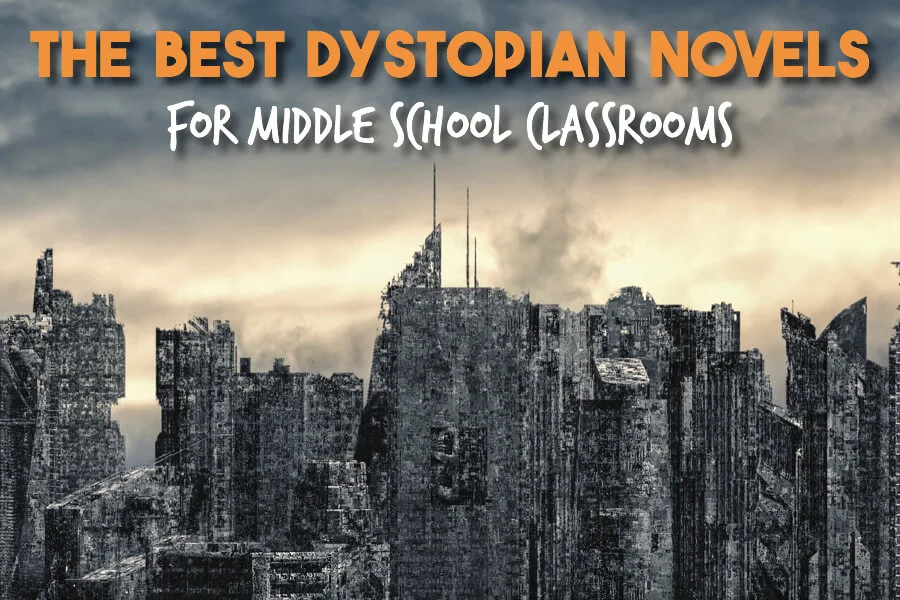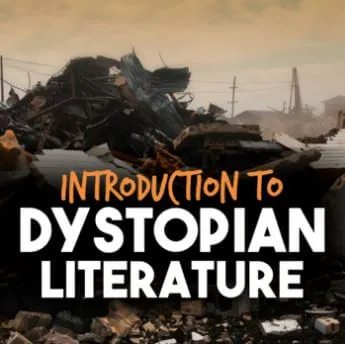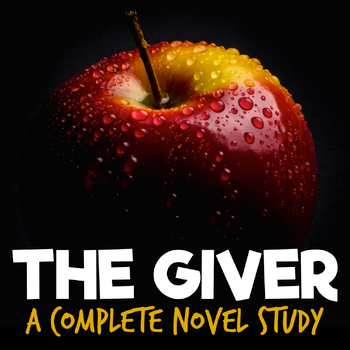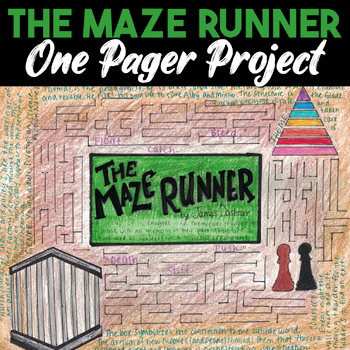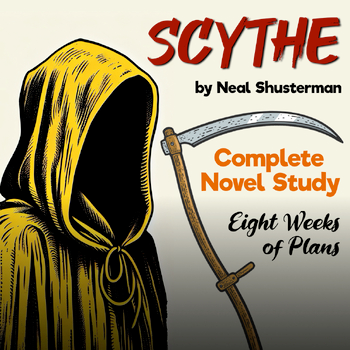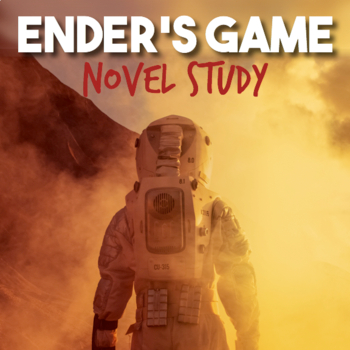Dystopian novels are the indisputable #1 draft picks of middle school libraries. Ever since Lois Lowry published The Giver, students have continued to absorb similar books at an exciting rate. With overarching themes of governmental control, environmental disaster, loss of individualism, survival, and technological control… dystopian books do a great job of keeping readers engaged, interested, and curious about how the story elements parallel real-life conflicts and social issues.
Here’s a list of 20 dystopian novels ready to rock any middle school classroom. Whether being read as a whole class novel, in book clubs, or as an independent read, the novels on this list are sure to get the pages turning, minds churning, and conversation flowing.
#1 The City of Ember by Jeanne DuPrau
Picture an underground city plagued by corruption and fear slowly coming to an end, with no one to stop its demise… that is until the 12-year-old protagonists, Lina and Doon, risk it all to potentially save the people and their failing city. It’s a classic tale of kids against the world, with the twist of a ticking clock. In the city of Ember, people are reliant on technology (eerily relatable?) and processed products to survive. When the technologies holding the society together start to break down, students will inevitably begin to consider the effects of the harmful practices we employ in modern society. Talk about thought-provoking! This book is full of opportunities to explore the themes of greed, power, and the relationship between man and mother nature.
Middle school readers will enjoy the friendship between Lina and Doon, who are both likable, brave, and relatable with their flaws. Be warned. Reluctant readers will be hooked. The fast-paced and tension-building plot will keep your students racing (and reading) to the end.
The City of Ember One Pager Project
#2 Divergent by Veronica Roth
Imagine a futuristic society where at the young age of 16, kids must choose a path that will determine the rest of their lives—talk about daunting pressure! Their choice determines which of the five factions, each rooted in a personality trait, they will spend their lives in. Oh! And these factions are used to abolish autonomy and individuality. (Dun, dun, dun). The novel follows protagonist Beatrice Prior as she struggles with the weight of this choice that ultimately separates her from her family. In a world where individuality is viewed as a threat, the novel explores the themes of power, control, family, and identity.
Divergent is quick to spark critical thought around the impact of societal constraints on individual choices and identity. This action-packed adventure will have even those reluctant readers eager to turn the page.
#3 The Last Book in the Universe by Rodman Philbrick
The title alone has me shaking in my boots!
Philbrick uses The Last Book in the Universe to create a world where books are no longer read, and the power of storytelling has been pushed aside. Instead, using mind probes (i.e., technology) to escape reality has become the primary source of entertainment (insert comparison to modern day here). The book includes fascinating characters, from “proovs,” or genetically improved humans, to endearing and misunderstood misfits like Ryter and Spaz. Together, Spaz and his band of underdogs courageously go up against the societal structures and authorities in an attempt to fight for what’s truly important. Philbrick masterfully crafts a story that begs the question of, when it comes to science and technology, how far is too far? And, how can the written word be used to both preserve the past and change the future?
This book is filled with numerous twists and turns that are sure to keep students engaged in Spaz’s high-stakes journey.
#4 Unwind by Neal Shusterman
Set in the U.S. is the wake of a fictional (but frightening all the same) second civil war; this novel explores the themes of morality, ethics, choice, and identity. Long story short… parents can choose to unwind or take apart their child’s body and donate the pieces to people in need. In other words, it’s a legal way to keep society free of troublesome or unwanted teenagers. (Legal? Apparently. Ethical? Well…). Thus, the novel follows three teenagers on a mission to save themselves from being unwound. And yes, it’s as suspenseful as it sounds. Perhaps the best part about this novel is the numerous opportunities for conversations about the intersection of law and ethics. In what ways are we blinded to seeing right from wrong? What happens when an authoritative body creates a possibly unethical solution to calm a society at war? How do we use crises to justify otherwise questionable actions?
I mean, the questions just keep coming. Students cannot help but become engaged with the ethical drama unfolding before them.
#5 The Giver by Lois Lowry
I couldn’t not include Lowry’s classic dystopian tale. In fact, it helped put a whole new meaning behind “nothing is what it seems…” Sure, a world free of pain, lies, and suffering may sound incredible. (But it’s a dystopian novel, so we know something has to give). Enter 12-year-old Jonas, a boy about to be assigned his lifelong career by the Elders. Jonas’ story brings about themes of questioning authority and valuing choice as well as authentic human experience. Lowry’s novel is accessible, yet dives into deeply complex topics such as individuality, freedom of choice, human emotion and experience, and the relationship between life and death.
While others may be frustrated by the novel’s ambiguous ending, I see it as a doorway to boundless critical thinking and engaging conversation.
#6 The Roar by Emma Clayton
Clayton’s The Roar takes place in a future society where government conspiracies and altered truths play a big role in the “reality” the characters live in. Set in a post-apocalyptic world, the novel centers around a pair of siblings as they try to fight against the governing forces that keep them apart.
It’s a story of survival, risks, and standing up for what you believe in (and the consequences that can follow). By the novel’s end (spoiler alert!), the kids come to realize that the world beyond the wall isn’t as scary as they were made to believe. Thus, the book opens the doors for conversation around power, control, and misinformation, highlighting the tension between societal constructs and human nature.
And then, of course, this is my favorite discussion point from this novel: Is it ever okay to question authority? If so, when? (The kids always have a field day with this one as well).
#7 Feed by M. T. Anderson
In a time where technology continues to transform our lives at an (alarmingly) increasing rate, Anderson’s Feed could not be more appropriate. The novel takes place in a futuristic society where technology has officially gone to that level. Instead of computers and cell phones, the technology is implanted right into the human brain. (You read that right). While students are fascinated with his idea at first, they quickly come to understand the negative consequences that follow as the story tracks teenage Titus as he navigates life, love, and the dark side of technological advancement. (Hashtag relatable). The novel is fascinating and thought-provoking, begging the question: When does it all become too much? It’s an excellent opportunity to talk about our own use of technology and the pros and cons it has in our own lives.
In addition to technology, the novel explores the intriguing themes of corporate power, conspicuous consumption, control, greed, and environmental decline.
#8 Uglies by Scott Westerfeld
This novel is dark and twisted— and students love it. Students find this harrowing tale fascinating and totally relatable as they struggle with identity and self-esteem issues in their own lives. Westerfeld creates a world where turning 16 marks the transformation from ugly to beautiful. Through head-to-toe surgery, that is. Is it really all it’s cracked up to be? (Hint: No). While the characters in the novel struggle with conformity, you’ll be amazed by the parallels students can draw to their own lives. The novel explores the tension between conformity and individuality, provoking important conversations about the strong influence of societal expectations and standards.
It calls into question what we truly value as a society and the impact on all of us. This novel balances a fascinating plot with a disturbing (and unfortunately relatable) truth.
#9 The Maze Runner by James Dashner
This popular dystopian title has earned its spot on many “must-read” dystopian literature lists. The novel centers around a dystopian setting of The Glade (a maze), where kids are basically trapped against their will and under constant watch by the maze’s creators. (Creepy, I know). Imagine Lord of the Flies but in a complicated labyrinth. Students are captivated as they watch the child-led hierarchy unfold as confused children continue to appear, questioning why they are there and if they will ever find a way out.
This novel is filled with intriguing discussion points exploring the themes of memory, identity, sacrifice, and hope. Students often offer a fascinating perspective on the pros and cons of dependability and stability over taking risks and seeking change as they compare and contrast the novel’s portrayal of order and chaos.
#10 The Hunger Games by Suzanne Collins
You had to see this one coming. Students love it. From the gut-wrenching plot-line to the excellent character development, this book keeps the pages turning. Taking place in the wake of North America’s collapse, Panem rises in its place (and I use the term risen lightly). Panem is made up of an otherworldly and totally over-the-top Capitol and its twelve districts, immediately highlighting the contrast between the materialistic and gluttonous upper class and, well, everyone else. The novel follows 16-year-old Katniss as she quite literally fights for her life in the annual Hunger Games. Students will be eager to discuss the authoritarian government and its unethical traditions. It’s a story about power and control, courage and rebellion.
As dark as this novel is, I love it for the sense of hope and inspiration it creates. Besides, who doesn’t love a down-to-earth heroine?
#11 The Marrow Thieves by Cherie Dimaline
In this futuristic society, global warming has totally changed the world as we know it (Foreshadowing? A warning? Perhaps both…). People have lost the ability to dream, hope, and feel inspired. The result? A downward spiral of madness and ultimately death. That is, until “recruiters” steal the bone marrow from the indigenous people—the only ones left with the ability to dream. By taking their marrow, the rest of the population is able to steal their dreams, and consequently, their lives. Talk about a fascinating conflict! The storyline opens the door to meaningful conversations about our country’s past, present, and future. The plot lends itself to a discussion on indigenous identity and oppression. Students will have a lot to say about this story of injustice, destruction, and life itself.
From conversations about life vs. death, right vs. wrong, and man vs. nature, this novel will keep the conversation going.
#12 Scythe by Neal Shusterman
In a world where humans have found the solution to its biggest problems— from hunger and disease, to war and even death—they’ve finally reached a utopian existence. That is until the threat of dystopia looms around every corner as overpopulation becomes the biggest threat to the utopic state of mind. Enter the scythe. The scythe, or death-bringers, are permitted to kill anyone at any moment. (Population control at its finest…). In other words, humankind has to solve a problem that nature once solved for them. Just when man thought he could have his cake and eat it too…
Scythe explores the dichotomy of life and death in an eerily fascinating way. The novel begs the question of, is a perfect world even attainable? Or is it merely the glimmer of hope that keeps us striving forward? (Cue: fascinating discussion that will have all of your students talking).
#13 Shadow and Bone by Leigh Bardugo
Netflix enthusiasts may instantly recognize this top title—Shadow and Bone is one of several YA books undergoing adaptation to a TV series format. Shadow and Bone subtly alludes to dangerous weapons development and the impending social costs of ravaging Earth through climate change.
Middle schoolers will relate to the “chosen-one” protagonist Alina, who struggles to make decisions without others’ validation. For much of the first book, Alina seems unsure of herself and naive. As the plot continues, she begins to step into her personal power.
Shadow and Bone is a useful reference for narrative world-building. If not reading as a whole class novel, ELA teachers can highlight excerpts from the book that illustrate effective imagery, descriptive writing, and “showing” versus “telling.”
#14 Matched by Ally Condie
“The Society” is a government organization that controls citizens’ every move. At 17 years of age, citizens are ‘“matched” by the authorities, a nod to artificial intelligence’s proliferation across all realms of society, including dating.
The love triangle relationship between the protagonist Cassia, her best friend Xander, and the “aberration” Ky serves as a model for taking time to navigate interpersonal relationships. In a developmental stage when competition often drives preteen and teen youth to engage in behavior they wouldn’t otherwise participate in, models of female agency can be empowering to middle school readers under the influence of peer pressure.
Matched encourages middle school readers to think critically and to consider the credibility of information presented to them. ELA teachers can use Matched as a foray into digital literacy and analyzing sources for credibility.
#15 The Last Kids On Earth by Max Brallier
Also a Netflix Original Series, The Last Kids on Earth plays on the apocalypse, or end-of-the-world motif. The protagonist, Jack, has barricaded himself inside his treehouse, which he has armed with all kinds of makeshift weapons.
Jack narrates the story in a funny, sarcastic tone that makes The Last Kids on Earth great to use with reluctant readers. The graphic novel format makes it an approachable entry-point into conversations around the disintegration of institutions, societies, and civilizations.
So often in history, students are taught to memorize important dates, documents, and monuments, but rarely are they afforded opportunities to imagine themselves in the same predicament as members of those civilizations. ELA and social studies teachers can collaborate to design an interdisciplinary unit on human-designed creations that could bring about the apocalypse or end of civilization as we know it!
#16 The Lost Continent by Tui T. Sutherland
At 14 books, Wings of Fire is one of the longest series recommended for middle school readers. It focuses on seven groups of dragons who inhabit the continent of Pyrrhia: SandWings, MudWings, SkyWings, SeaWings, IceWings, RainWings, and NightWings. There are three arcs of the series, made up of five books each. The third arc, starting with The Lost Continent (Book #11), steers the series into dystopian territory, featuring an autocratic ruler who tolerates no dissent, enslaves their own people, and sets off to complete a genocide of an entire dragon species.
Dragons receive their “wings,” are assigned a “work order,” and move to another dragon hive. Middle school readers can relate to the dragon characters, who navigate these changes with a range of emotions, responses, and solutions.
Such an extensive series is a great example for teaching character development and world-building within a narrative writing unit. Students can create their own imaginary settings and special groups of people or animals with their own special abilities or characteristics. Educators can also use the text as a mentor for discussing point-of-view and personification.
#17 The Ark Plan by Laura Martin
After scientists cloned dinosaurs, they quickly overpowered the human species. Characters in The Ark Plan are forced to live in underground compounds until they can figure out how to destroy or co-exist with the gargantuan predators. Protagonist Sky and her best friend Shawn break out in order to find her father, who has mysteriously disappeared.
Sky is disliked by most of the people in her compound—her story line is all about overcoming challenges, disregarding put-downs, and growing in self-confidence. Reluctant readers will love the action-packed scenes, which are similar to adventure thrillers like Jurassic Park.
Fun fact: The Ark Plan was actually written by a former English teacher! The story could serve as an allegory of K-12 schooling, where creative, divergent thinkers are often marginalized or disliked by peers and authorities. The book is also a fun and appropriate fiction piece to accompany more informational texts about evolution, natural selection, and extinction.
#18 Steelheart by Brandon Sanderson
Steelheart takes place in a post-apocalyptic world where an unknown cosmic conundrum has enabled humans to develop physics-defying superpowers. Called “Epics,” these mutants are focused on toppling governments and enslaving humanity for their malevolent causes.
The main character, David, is determined to avenge his father, who was murdered by one of the Epics. He joins the elite “Reckoners” group, another squad of outcasts whom middle school readers will undoubtedly relate to.
Steelheart is an excellent novel for discussing themes of corruption and government. Each Epic symbolizes a larger societal problem that students can analyze and work together to resolve or mitigate.
#19 The Unwanteds by Lisa McMann
The Unwanteds blends popular dystopian elements from Harry Potter and The Hunger Games, such as sorting people into factions and creating inequitable social hierarchies. Each year, all 13-year-olds are classified as Wanted, Necessary, or Unwanted. Necessaries are like essential workers, Wanteds are supposedly prized for their range of talents and abilities, and Unwanteds are sent to death farms…or so they are led to believe.
As it turns out, Unwanteds are actually sent to a magical place to hone their creative abilities and talents. Eventually, Unwanteds are pitted against Wanteds, and the Unwanted protagonist Alex must fight his Wanted twin Aaron—middle school readers who enjoy books with multiple points-of-view will enjoy following the plot according to Alex’s and Aaron’s perspectives.
Unwanteds highlights how characteristics and talents others may deem unworthy or useless can actually be used for progress.
#20 Ender’s Game by Orson Scott Card
Doubling as a science fiction novel, Ender’s Game is set in a dystopian world that will have students intrigued from the very first chapter. In this futuristic society, the government microchips young individuals to monitor their thoughts and behaviors in order to determine whether or not they could make a suitable soldier in the military. At only age six, Ender (the narrator) exhibits these desirable traits and is promptly drafted for Battle School where he will be trained to kill aliens called “buggers.” Even though Ender is so young, his intelligent, sensitive, and courageous voice resonates with teenagers. He is bullied for being a third child in a society that endorses a two child policy. This story highlights the unethical tactics of war and the manipulation of adults over children.
Bullying, pressure, sibling rivalry, manipulation, loneliness, and violence are all major discussion points that middle schoolers flock to while reading this novel.
Why dystopian novels are a must for the middle school classroom.
These novels create a bridge between the safety of the imaginative world of literature and the reality of life’s biggest questions and struggles. Since the novels themselves are somewhat “unrealistic,” they are the perfect icebreakers for conversations around imperative topics that can be hard to break into. And what group of students are more awkward yet more impressionable than middle schoolers? Yet, the deeper into the discussion they go, the more the students unravel the stark parallels between the fictional universe and the very world they live in.
What’s even better is that these novels instill hope, courage, resilience, and bravery. They encourage students to pursue knowledge and ask questions. These novels stimulate critical thinking and thought-provoking conversation.
If you think about it, isn’t that what teaching is all about?
If you enjoyed this list and you’re interested in learning more about planning a novel study check out my step by step guide to doing just that!
